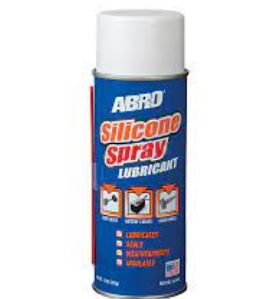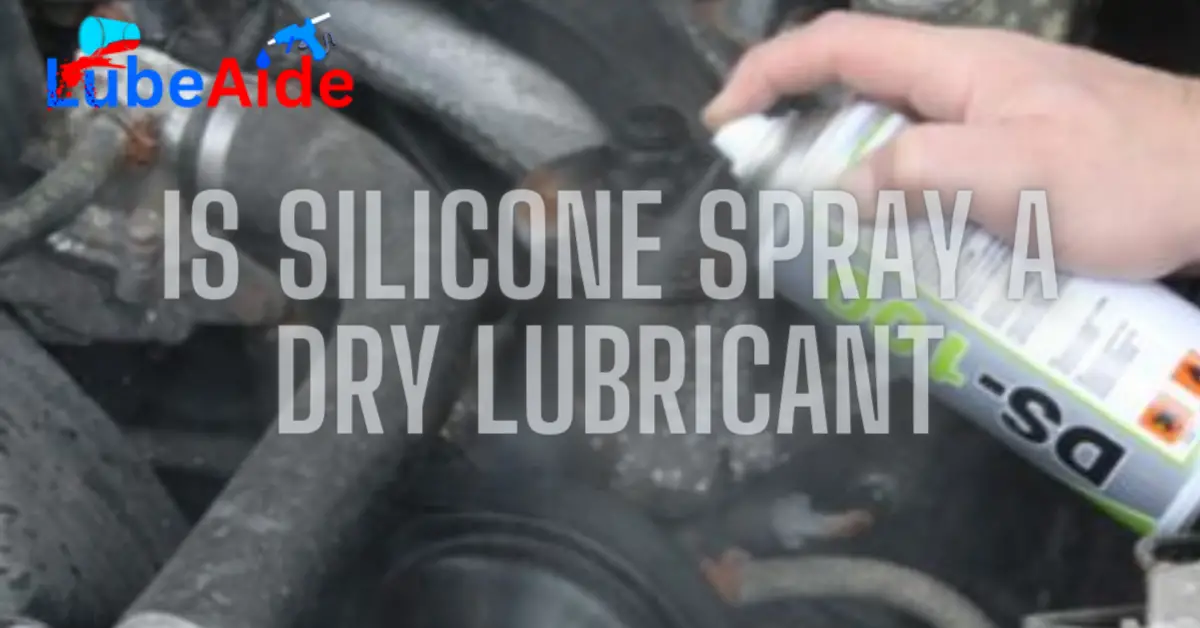Silicone spray is a popular lubricant that is used in various industries and households. However, there is a lot of debate around whether silicone spray is a dry lubricant or not. Some people argue that silicone spray is a dry lubricant because it dries quickly and does not leave any residue behind, while others believe that it is not a dry lubricant because it is made of silicone oil.
Silicone spray is a versatile lubricant that can be used for a variety of applications, including lubricating moving parts, protecting against corrosion, and preventing rust. It is often used in the automotive industry to lubricate door hinges, locks, and other moving parts. Additionally, it is commonly used in households to lubricate squeaky doors and windows. Despite its widespread use, there is still some confusion around whether silicone spray is a dry lubricant or not. This article will explore the topic in-depth and provide a clear answer to this question.
What is Silicone Spray?

Silicone spray is a type of lubricant that is commonly used in various industries. It is a clear, odorless, and non-staining liquid that is applied to surfaces to reduce friction and prevent rust and corrosion.
Composition
Silicone spray is made up of a combination of silicone oil, solvents, and propellants. The silicone oil is the primary lubricant, while the solvents and propellants help to disperse the silicone oil evenly over the surface. The solvents used in silicone spray are typically hydrocarbons, such as butane or propane, which evaporate quickly, leaving behind a thin layer of silicone oil.
Uses
Silicone spray is commonly used as a dry lubricant in various industries, including automotive, aerospace, and manufacturing. It is often used to lubricate moving parts, such as hinges, gears, and bearings, as well as to protect metal surfaces from rust and corrosion.
In the automotive industry, silicone spray is used to lubricate weatherstripping and other rubber components, as well as to prevent squeaks and rattles. It is also used to protect electrical connections and prevent moisture from causing damage.
In the aerospace industry, silicone spray is used to lubricate cables and other moving parts that are exposed to extreme temperatures and harsh environments. It is also used to protect metal surfaces from corrosion caused by exposure to saltwater and other corrosive substances.
In the manufacturing industry, silicone spray is used to lubricate machinery and equipment, as well as to protect metal surfaces during storage and shipping. It is also used to prevent sticking and adhesion of materials, such as plastics and rubber.
Overall, silicone spray is a versatile and effective lubricant that is widely used in various industries. Its unique properties, such as its ability to resist high temperatures and repel water, make it a popular choice for many applications.
Dry Lubricant vs Wet Lubricant
Definition
Dry lubricants are substances that reduce friction between surfaces without the need for a liquid carrier. They are often used in situations where liquid lubricants would attract dirt and dust, or where the lubricant needs to be applied in a precise manner. Dry lubricants can come in many forms, including powders, pastes, and sprays. Silicone spray is one example of a dry lubricant.
Wet lubricants, on the other hand, are substances that are applied in a liquid form. They are typically used in situations where a high degree of lubrication is required or where the lubricant needs to be able to flow into tight spaces. Examples of wet lubricants include motor oil, grease, and hydraulic fluid.
Differences
The main difference between dry and wet lubricants is the way they are applied and their physical properties. Dry lubricants are typically applied as a thin layer that adheres to the surface of the material being lubricated. They are often used in situations where liquid lubricants would attract dirt and dust, or where the lubricant needs to be applied in a precise manner. Dry lubricants are also less likely to attract moisture, which can cause rust and corrosion.
Wet lubricants, on the other hand, are applied in a liquid form and flow into tight spaces. They are typically used in situations where a high degree of lubrication is required or where the lubricant needs to be able to flow into tight spaces. Wet lubricants are also better at dissipating heat, which can be important in high-speed applications.
In terms of performance, wet lubricants are generally better at reducing friction and wear than dry lubricants. However, dry lubricants are often preferred in situations where liquid lubricants would be impractical or where the lubricant needs to be applied in a precise manner.
In conclusion, both dry and wet lubricants have their advantages and disadvantages. The choice between the two will depend on the specific application and the requirements of the user.
Is Silicone Spray a Dry Lubricant?

Silicone spray is a type of lubricant that is commonly used in various applications. One of the questions that often come up when discussing silicone spray is whether it is a dry lubricant or not. In this section, we will explore this question and provide an answer.
Properties
Silicone spray is a type of lubricant that is made from silicone oil. It is a clear, odorless, and non-toxic liquid that is used to reduce friction between two surfaces. Silicone spray has several properties that make it an effective lubricant. It is:
- Water-resistant
- Temperature-resistant
- Non-corrosive
- Non-staining
Benefits
Silicone spray has several benefits that make it a popular choice for lubrication. One of the main benefits is that it can be used as a dry lubricant. This means that when it is applied, it dries quickly, leaving behind a thin layer of lubricant that reduces friction between the two surfaces. Other benefits of silicone spray include:
- It can be used on a variety of surfaces, including metal, plastic, rubber, and wood.
- It provides long-lasting lubrication.
- It can be used in both high and low-temperature applications.
Limitations
While silicone spray has several benefits, it also has some limitations that should be considered. One of the limitations is that it may not be suitable for high-load applications. This is because silicone spray does not provide as much lubrication as other types of lubricants, such as grease. Other limitations of silicone spray include:
- It may attract dust and dirt, which can cause it to become less effective over time.
- It may not be suitable for use in applications where there is a risk of contamination, such as in food processing or medical applications.
In summary, silicone spray can be used as a dry lubricant and has several benefits that make it an effective lubricant for various applications. However, it also has some limitations that should be considered when selecting a lubricant for a specific application.
Applications of Silicone Spray as a Dry Lubricant
Silicone spray is a versatile lubricant that can be used in various industries and applications. In this section, we will discuss its applications as a dry lubricant.
Automotive Industry
Silicone spray is commonly used as a dry lubricant in the automotive industry. It can be used to lubricate door hinges, locks, and latches, as well as window channels and weatherstripping. It is also effective in preventing rubber and plastic parts from drying out and cracking.
In addition, silicone spray can be used as a protective coating for metal parts, preventing rust and corrosion. It is safe to use on most automotive surfaces, including paint, plastic, and rubber.
Household Use
Silicone spray is also useful in household applications. It can be used to lubricate door hinges, locks, and drawer slides. It can also be used to prevent squeaks in bed frames and other furniture.
Silicone spray is also effective in preventing rust and corrosion on metal surfaces, such as tools and outdoor furniture. It can also be used to protect rubber and plastic parts from drying out and cracking.
Industrial Applications
Silicone spray has many industrial applications as a dry lubricant. It can be used to lubricate conveyor belts, chains, and gears. It is also effective in preventing rust and corrosion on metal surfaces, such as machinery and equipment.
In addition, silicone spray can be used as a release agent in the manufacturing of various products, such as rubber and plastic parts. It can also be used as a protective coating for electronic components, preventing moisture and corrosion.
Overall, silicone spray is a versatile dry lubricant that can be used in various industries and applications. Its unique properties make it an effective lubricant and protective coating for many different surfaces and materials.
FAQ About Is Silicone Spray a Dry Lubricant
What are the advantages of using silicone spray as a dry lubricant?
There are several advantages to using silicone spray as a dry lubricant. These include:
-It does not attract dirt and debris, which helps to keep surfaces clean.
-It does not leave behind any residue, which helps to prevent the buildup of gunk and grime.
-It is resistant to water and other liquids, which makes it ideal for use in wet environments.
-It is non-toxic and safe for use around food and other sensitive materials.
What are some common uses for silicone spray as a dry lubricant?
Silicone spray is commonly used as a dry lubricant in a variety of applications, including:
*Automotive maintenance: Silicone spray can be used to lubricate door hinges, locks, and other moving parts on a vehicle.
*Aerospace maintenance: Silicone spray is often used to lubricate hinges, latches, and other moving parts on airplanes and other aircraft.
*Household maintenance: Silicone spray can be used to lubricate squeaky door hinges, window tracks, and other household items.
*Industrial applications: Silicone spray is used in a variety of industrial applications, including in the manufacturing of plastics, rubber, and other materials.
Is silicone spray safe to use?
Yes, silicone spray is generally considered to be safe to use. However, it is important to follow the manufacturer’s instructions and use it only as directed. It is also important to avoid inhaling the spray or getting it in your eyes or mouth. If you have any concerns about using silicone spray, consult with a professional before use.
Final Thought
Is Silicone Spray a Dry Lubricant? In the end, silicone spray is commonly considered a dry lubricant. Although the term “dry” might be misleading, it refers to the absence of liquid components that can attract dirt or leave behind residue. Silicone spray consists of a silicone oil suspended in a solvent carrier, which evaporates quickly after application, leaving a thin, lubricating layer of silicone behind.
The use of silicone spray as a dry lubricant offers several advantages. It provides excellent lubrication properties, reducing friction and enabling smooth movement between various surfaces. The silicone layer also helps to prevent corrosion and protect against moisture, making it suitable for both indoor and outdoor applications. Additionally, silicone spray has a wide temperature range, remaining effective in extreme heat or cold.
Related Topic:
Is Red and Tacky Grease Good for Wheel Bearings
How Often Should You Grease Wheel Bearings on a Car
Can You Over Grease Wheel Bearings
Can You Use Moly Grease in Wheel Bearings
How to Grease Trailer Bearings With Grease Gun
Can You Lubricate Timing Belt
How to Lubricate Steering Column
How to Lubricate Sliding Windows
How Do Automatic Lubrication Systems Work


